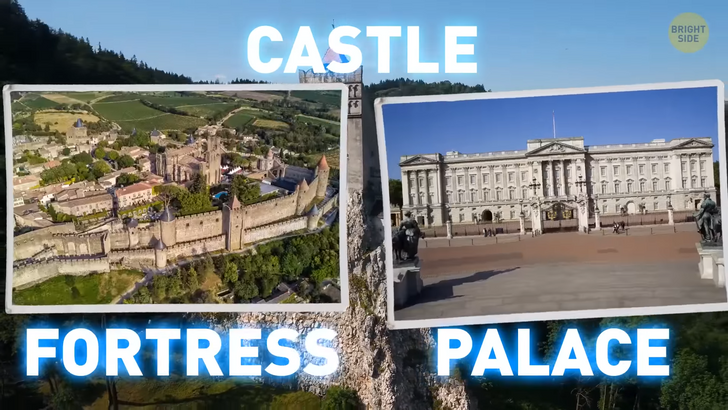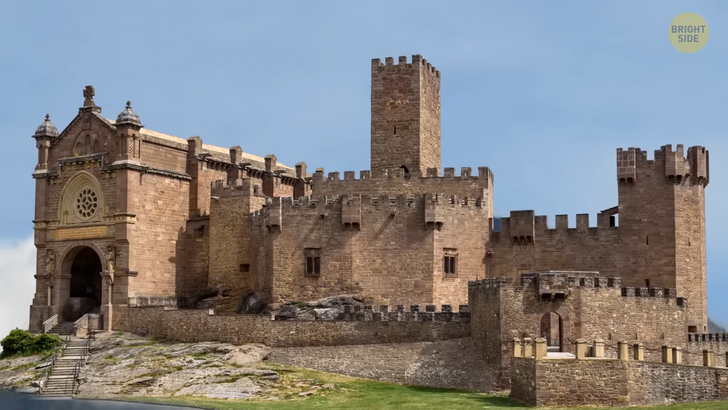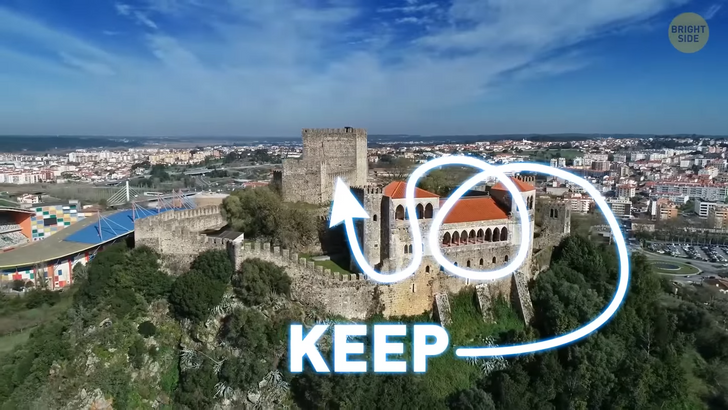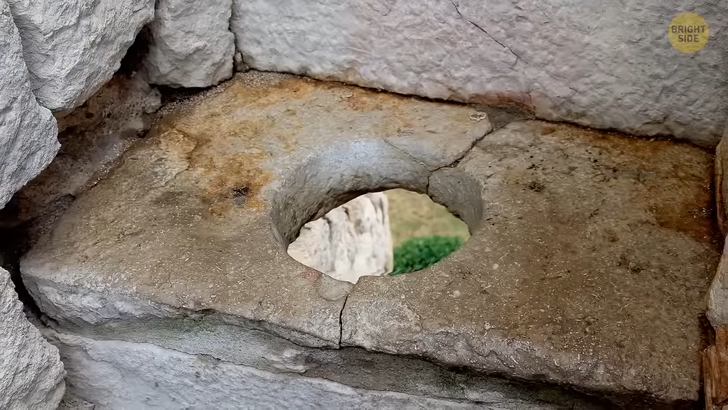13 Stories That Show Just How Twisted Life Can Get

Hello distinguished guests and welcome to the Middle Ages! We’re honored by thy presence! Sorry for the bumpy ride... It’s not easy traveling in a cart... But the other two options you had were either riding a horse or simply walking... Oh well, that’s medieval times for you! No highways around here... Anyway, I’m Constable Bright, and I’ll be your guide through this castle tour! Now, forget everything you’ve learned about castles, especially those from princess movies because I have prepared so many jaw-dropping castle secrets for you! Time to pass through the gate! After you!

I want to begin our tour by correcting a misconception. Castles have often been confused with palaces or fortresses. However, unlike both of them, they were built with one specific purpose in mind. A “castle” is considered to be a fortified residence of an important person. On the other hand, palaces were not fortified, and fortresses didn’t really serve residential purposes. European-style castles came into existence around the 9th and 10th centuries. During that time, you probably wouldn’t want to live in Europe since it fell into chaos after the fall of the Empires. The land was divided between lords, princes, or noble people of any kind. And now, they had to find a way to control and protect their territories, so they began building castles. Much like the pillow fortresses you and your sibling built to protect your corners of the living room back when you were kids, but on a larger scale...

However, aside from their original purpose of defending the land, castles also served as centers of administration and symbols of power. Precisely urban castles were used to control the local population in addition to important travel routes. The earliest castles were actually made of wood. However, they eventually proved to be not-so-great for protecting the land. First of all, they usually relied on one central keep. Also, they could easily be burnt to the ground. That is one of the reasons why you can’t visit a wooden castle museum today, as well as the fact that they are probably long rotten... Wooden castles were later replaced by stone ones as they were more sturdy. However, they had their disadvantages, too. They were more expensive as well as time-consuming to construct. If you were swimming in gold and silver then kudos to you. But again, you would still have to wait around 10 years for your castle to be completed since the whole process included the stones being quarried and brought in. Remember, there were no diggers, cranes, or bulldozers to make things easier.

As you can imagine, the first stone castles were cold, dark, smelly, and damp. To get rid of at least the smell, they would use sweet-smelling herbs to cover the walls and floors. Contrary to what representations of castles in popular culture may have led you to believe, earlier castles were actually not that big. Many of them consisted of just a single watchtower and had one room, or two rooms if the owner was feeling fancy and had the money. When it came to building a castle, the location was strategically more important than the design. These structures would often be built on hard-to-reach places such as islands, hill forts, or next to the sea so that they would have some natural protection as well. Such location choices also allowed the castle’s residents to see for miles around them, and spot and prepare for any dangers to come.

So, the more the castle was secluded and inaccessible, the better it was. But those without such natural defenses would be surrounded by ditches or moats for that extra layer of protection. In such cases, access to the castle would be granted via a drawbridge. However, in addition to being as secluded as possible, castles would have to be situated near features that were integral for survival, such as mills, fertile land, or a freshwater source. Now, let’s talk about the gate and the stone outer walls for a while before we head inside. You might think that the central keep would be the most important part of a castle’s structure, but it’s actually the gatehouse that needed to be protected at all costs. Because it was also the weakest part that provided a straight path into the courtyard. That’s why it would have to be as small as possible to stop any unwanted visitors. So, those massive gates you see in fantasy movies are actually unrealistic and impractical since, in reality, they would make the castle harder to defend.

When it comes to the towers you see on every side of the castle walls, an upgrade to the design proved to be necessary over time. As it happened, the earlier castles had square towers. Yet, it was quite easy to destroy them. One would simply have to dig tunnels under the corners, and they would collapse. That’s why castle builders switched to round towers. It’s time for us to step inside the keep now, which is the central building inside the castle! This was where the most important people lived — like the lords and ladies, as well as their guests, representatives, and sometimes even servants. The lord and lady would sleep in their chamber, that is if they were one of the richer nobles to have more than one room in their castles. The others, on the other hand, would sleep in the great hall which would also be used as the dining area. The funny thing is castles normally didn’t have dungeons, at least not in the way you would think...

The word “dungeon” is actually derived from the French word “donjon” which means “a keep”. So, in reality, instead of being a prison, dungeons acted as the last places for the castle inhabitants to take shelter in case other outer defenses fell in the face of a threat. I bet your eyes caught the spiral stairs now, right? They were built that way for safety reasons. The clockwise direction of the staircases was meant to make it harder for an invader coming up the stairs to draw their sword since it would be along the interior curve of the wall. This is all considering that their right hand was their sword hand, of course. On the other hand, anyone coming down the stairs would have an advantage, because their sword hand would be on the outside of the wall, and they would have more room to swing. Ascending clockwise would also mean that the invader would be exposing more of their body in order to get their sword, hence making it easy for the defender to ward off their swings. In addition to that, stairs would be designed with uneven steps — some would be taller, and others would be shorter. This would allow people who were familiar with the castle to move quickly and cause invaders to stumble and fall.

In case emergency situations escalated, castles had secret entrances and exits as well. The main concealed door would be called “the postern” or “the sally port” and would traditionally lie at the base of a castle’s wall. It would often be small and easy to defend, as well as secured with metal grates. It held great importance when it came to allowing people to escape or bring in food and other supplies during sieges. You might need to use the bathroom before our tour ends, but sorry to inform you that there are no toilets around here... The most toilet-like thing you would get in a castle would be a room with a hole that led out into the moat surrounding the walls. These rooms would be called “garderobes” and, as you can imagine, they would smell terrible... That is why people would also use them as wardrobes with the idea that the odor would keep insects away and prevent them from damaging their clothes. So, I suggest you wait until you’re back at your modern home to take care of your “business”... Fare thee well, traveler!











